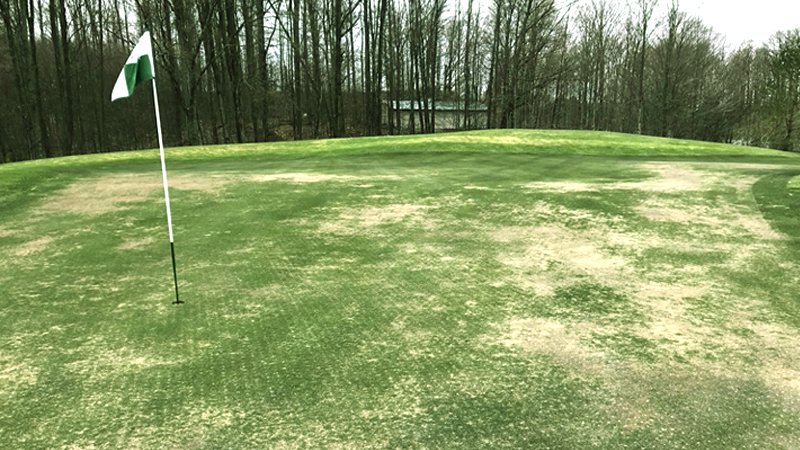Scientists from more than a half-dozen universities and research organizations want to learn all they can about winter damage on golf courses. And they want your help.
Described as a holistic approach to understanding the mechanisms and mitigating the effects of winter stress on turf grasses in northern climates.
 The WinterTurf Grant project is a joint initiative of the University of Minnesota, Michigan State, Wisconsin, Rutgers, Massachusetts, Iowa State, Oregon State, the USDA Ag Research Service and the Norway Institute of Bioeconomy Research. It is focused on collecting data next fall and winter from golf courses in multiple countries to help gain a better understanding of winter stresses of turfgrass leading to more effective solutions for superintendents in cold weather climates. To learn more about the program, scan the QR code at right.
The WinterTurf Grant project is a joint initiative of the University of Minnesota, Michigan State, Wisconsin, Rutgers, Massachusetts, Iowa State, Oregon State, the USDA Ag Research Service and the Norway Institute of Bioeconomy Research. It is focused on collecting data next fall and winter from golf courses in multiple countries to help gain a better understanding of winter stresses of turfgrass leading to more effective solutions for superintendents in cold weather climates. To learn more about the program, scan the QR code at right.
Michigan State professor Kevin Frank, Ph.D., one of the researchers participating in the WinterTurf initiative, addressed the study in a recent TurfNet webinar on winter damage.
"One of the strategies I've been involved with," Frank said, "is developing the strategy, mitigation and recovery from winter damage in turfgrass."
To achieve their goals, researchers will monitor:
- Remote sensing of golf course greens to improve knowledge and management of winter stresses in cold climates.
- Increase physiological understanding of factors associated with winterkill to inform turfgrass management and breeding approaches.
- Develop improved integrated snow mold management strategies.
- Improve creeping bentgrass and perennial ryegrass germplasm for traits associated with superior winter hardiness.
- Develop strategies for mitigation of and recovery from winter damage in turfgrass systems.
- Educate stakeholders about winter stresses.
To that end, researchers need cooperation from superintendents at golf courses located in cold climates throughout the world. The program's success relies on staff on the ground collecting data and submitting that along with information on things like agronomic practices, damage history that will be combined with other data (weather, satellite imagery, etc.) to detect patterns that inform us about winter stresses of turf.

The WinterTurf Grant program is designed to study data from golf courses in northern climates to provide information on winter damage and how to recover from it. Photo from Kevin Frank, Ph.D.
Researchers have developed an easy-to-use web application for data entry that works on both mobile devices and desktop computers.
Participants will be asked to:
- Take photos of the green before, during and after winter.
- Share management information.
- Provide any recent soil test results.
- Measure snow depth at 4 locations on the green each week and take other notes related to the presence of water and/or ice.
"We're looking at a lot of different aspects," Frank said.
"And we're really relying a lot on kind of citizen-science projects associated with it, of having superintendents in northern climates help us with some of our data collection."
The WinterTurf Grant project is a joint initiative of the University of Minnesota, Michigan State, Wisconsin, Rutgers, Massachusetts, Iowa State, Oregon State, the USDA Ag Research Service and the Norway Institute of Bioeconomy Research.
The program is in its second year, and those who participated in 2023-24 can do so again.
A limited number of sensor nodes will be available for installation to monitor winter conditions such as temperature, light, moisture and oxygen levels in the soil and on the surface of the green.
Data from these nodes will help researchers learn more about winter stresses of turfgrass so they can predict when it happens and find solutions to reduce risk for the turfgrass managers.
Nodes are available for a "donation" of $3,000 and will ship in late October or early November.
For more information, contact Eric Watkins, Ph.D., at the University of Minnesota.